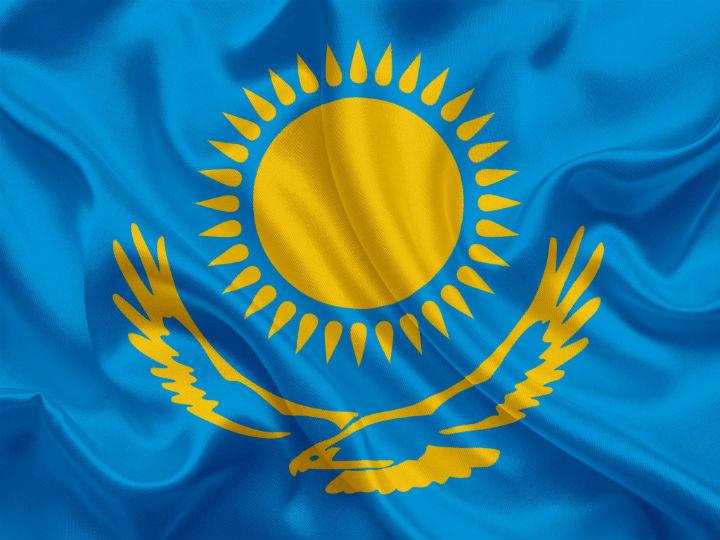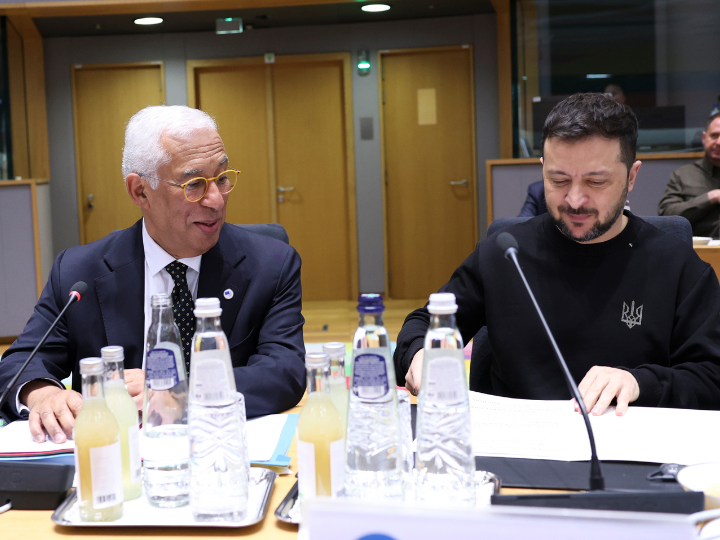by Radu Magdin*
Central Asia is a place of open skies and wild beauty. As far as one can see, the tallest things are trees and mountains. Far are the windmills of Europe and the millimeter-precise agricultural land used to full capacity. Places that were once depleted by Soviet over-exploitation have been allowed to rest, while others could use a jump to more sustainable use. It is a situation that enough people know about, but few have any ideas how to go about improving the situation.
Welcome to Kazakhstan. The inheritor of the largest part of the Soviet exploitation of resources in Central Asia, for 30 years it walked a sinuous path between a post-Cold War society and economy and the sparks of modernization. Its first president prioritized above all the internal security and control of the country, as Kazakhstan first had to get its house in order, with an ethnically and culturally diverse society and a divided economy, but with common aspirations for modernization. And for a few years, Kazakhstan’s second president has started acting out measures and reforms that are bringing the country closer to and in line with economies around the world, prioritizing the development of its people and strategic economic development over past concerns.
The Covid pandemic was a rude awakening. Whereas previous governmental plans for modernization and reform had laid out a patient and slow road ahead, Covid, with its implications in terms of global governance, trade flows, and requirements for self-sufficiency, combined with the accelerated pace towards sustainable economies, pushed Kazakhstan towards the line-up to a greening and development marathon, one in which it needs its international partners as well as the cooperation of all its citizens.
On June 10th, at the Foreign Investors’ Council, meeting with 37 large transnational companies and international organizations as well as heads of key ministries, president Kassim-Jomart Tokayev’s message was clear and straightforward: the country needs to rely less on exporting commodities, and it needs to start greening its economy. “Kazakhstan, as an economic system, cannot rely only on domestic investment, domestic demand and export of raw materials”, he added, which betrays an intense preoccupation with integrating Kazakhstan in the global value chains and drawing on a diversity of investment capital sources.
Among encouragement for the digitalization of various sectors, an interesting position stood out: the boosting agricultural exports (and their digitalization) could serve as a driver of economic growth. This perspective immediately triggered a reflexive assessment related to hydric stress and the tensions in the region. Clearly there must be better ways to increase Kazakhstan’s participation in the world economy than by pushing a traditional sector beyond a risky point. After all, the sustainable use of the land is part of the green transition.
These kinds of perspectives and decisions are starting to become a challenge all too common for many parts of the world. Not least due to the path-dependent recommendations that many decision-makers receive, while in reality they need to look into the future and back-cast to what they need to do today.
For Kazakhstan, the diversification of the economy remains a challenge. Copying models and ideas of greening will open a completely virgin field for Kazakhs, and probably it would serve them better to kickstart the sustainable revolution like this, rather than continue adopting path-dependent solutions. Then, as the innovation capabilities of the economy grow, Kazakhs could start developing forms of their own.
The agribusiness sector in Kazakhstan is probably one of the easiest examples to use. Though previously state subsidies supported the Kazakh agricultural sector, the modest growth in productivity describes a sector that is yet to start on its learning curve. Consequently, in spite of the opening up to international markets and financing options, Kazakhs should be conservative on crediting options until more knowledge and expertise is diffused into the system, as to ensure the avoidance of potential defaults, overburdening of private entrepreneurs, or the requirement in a few years for the government to intervene and cover the costs of credit.
Rather, as Kazakhstan embarks on the journey to digitalization across all its sectors, what would make sense would be for the use of automation and aero-space-based capabilities to increase yield while decreasing resource consumption (like water), while also using capital to acquire repeat-use capabilities such as the latest agricultural machinery, rather than financing operations.
These kinds of decisions and strategy need to be made for every single sector of the Kazakh economy, as the overall strategy is to prioritize exports, rather than attain self-sufficiency. This automatically denotes yield and the effectiveness of invested capital as the drivers of the economy, rather than considerations such as full employment, for example.
This being said, it is probably inaccurate to think Kazakhstan fully adopting a model of exports-based economics. If in other parts of the world external and hard security are the counterweight to economic development, for Kazakhstan it is the care for internal cohesion and the rising of education and wellbeing levels across the territory that moderate an excessive focus on economic growth.
We know, at the same time, from government decisions at the beginning of 2021, when they looked at Covid’s 2020 P&L, that the leadership has a plan for self-sufficiency as well. Or rather, that there are key sectors of the economy where they are trying to leverage existing capabilities or natural advantages to out-compete others in the world. Thus, we can say that, with a state apparatus geared towards expanding international trade and exchanges, and with specific competitive strategies that leverage autonomous capabilities, Kazakhstan may succeed carving for itself a new (or several) niche(s) in the global marketplace, along with increasing its share in some others.
The medium-term challenge of this model is that Kazakhstan will need to find the financing to bridge the time-ROI gap as they taper-off raw materials exports while pulling a double shift to both invest in and acquire new technologies and capabilities, and also to increase the knowhow and expertise across strata of society and territorial distribution, so that a new economic engine kicks in before the green wave hits.
This is bound to happen as Kazakhstan, just like the rest of the world, will need to upgrade its economy to non-fossil fuel based or low CO2 footprint. In the US, Europe, and APAC region, corporations, credit rating agencies, governments and academia are working feverishly at building models, estimating impacts, anticipating exposure and risks for when the capital tap will run dry on projects that are not compliant with new ESG standards. Add to this the public pressure on corporations to no longer do business with countries or in sectors that can harm the environment or are not sustainable, and entire rentier model economies will be wiped out, as well as those that do not move from raw materials to higher added value. This is probably the greatest risk built into Kazakhstan’s economy, as it is still in the process of moving away from the Soviet bases of its economic activity, while its biggest investors and partners come from the most militant geographies of the planet.
In spite of its passed geopolitical positioning, Kazakhstan actually has the most significant economic exchanges (in value, not volume) with the European Union. To that, since the ascent of the new president, Jomart Tokayev, a few years back, the country has been actively working on identifying new cooperation opportunities as well as diversification of its economic activity, access to technologies and capital, and trade. On the one hand, this came as a balancing tactic for its ‘portfolio of prime partners’ – namely the EU, Russia, and China, who looked like they were about to become strategic competitors; and on the other, it came as an expression of the ambitions to come into its role as emergent middle power. In the context of the undoing of the post-World War II global order, the shifting sands in the CIS countries, and the rise of the Gulf and ASEAN economies, Kazakhstan is trying to fill a gap and to fulfil a role of stabilizing middle power at the core of the vast Eurasian space.
Working with the likes of the Foreign Investors’ Council, Kazakhstan has the opportunity of extracting the most value of its credit-taking as well as of the investment potential – if it anticipates the green wave that is about to hit all its neighbors and works towards being an early adopter of green technologies.
For also succeeding in jumping ahead of the curve, more investment would be required in the human capital at all levels of society. But this gap too can be addressed – in a similar way the Gulf economies have. In a time of plenty, with oil prices high and no consensus regarding the path to take in economics of global governance, Gulf states supplanted their businesses with foreign specialists that helped the countries achieve wealth before they achieved human capital excellence. After years of strategizing and investing in universities, research labs, and international scientific exchanges, we now see the same states increasingly being able to cover their economic needs with their own specialists, who have seen various parts the world and have been trained in schools of excellence. Kazakhstan could potentially consider a similar course of action, as it is more pressed for time, now that the Green Wave is coming, while having similar constraints with the Gulf states with regards to the structure of its economy and dependency on commodities exports.
With the early June 2021 raising of the target share of renewable energy of the country to 15% by 2030, up from 10% previously, we can say that the country’s leadership is aware of the ESG requirements that will soon become the norm for participating in global trade. That said, a linear progression would indicate an under 50% share of renewables by mid-century, a time when the EU, China, and the US have committed to being close to full energy sustainability. This will complicate things, as Kazakhstan is hoping to export some of its renewable energy via the Eurasian Energy Market, likely benefitting from some FX effects in the process, and counting on its enormous potential for wind and solar.
This strategy can cut both ways, though, risking Kazakhstan’s peaceful relations with its neighbors. On the one hand, other countries from the neighborhood stated that they do not intend to give up gas and oil by mid-century, or until they reach an appreciable level of technological development and economic sophistication. Question being, who will Kazakhstan sell energy to at a premium? The other logic applies too – its neighbors will have difficulties accessing, for example, the Euro-Atlantic market, for either capital or for exporting goods, which would put Kazakhstan in the position of offering them renewables, so that their ESG reporting improves, and they are granted a chance to participate to global trade flows. But then that would also transform Kazakhstan into a country with the leverage over its neighbors – a position as delicate as the complex relationship shared by the five central Asian countries with regard to sharing water resources.
The post-Covid world is rushing in fast, and for countries like Kazakhstan, it is likely to be experienced as a “Green Tsunami”, due to the capabilities-targets gap. A previously ambitious modernization agenda of the Tokayev presidency, with a focus on cohesiveness, human capital, and gradual liberalization of the country, will be confronted with the harsh realities of having to double the pace of infrastructure and economic modernization and a burgeoning foreign affairs and trade apparatus – a requirement, given the task of making Kazakhstan the star of Eurasia. Yet, as a geopolitical analyst, I think we should not be worried, but rather invested: Kazakhstan has over the past few years shown that it listens to all advice and picks what it suits it, with a high capacity to shift path on a dime, if need be. And while the challenges are great, we should not forget one thing: Kazakhstan is only beginning to open up.
*CEO Smartlink Communications




 By: N. Peter Kramer
By: N. Peter Kramer
